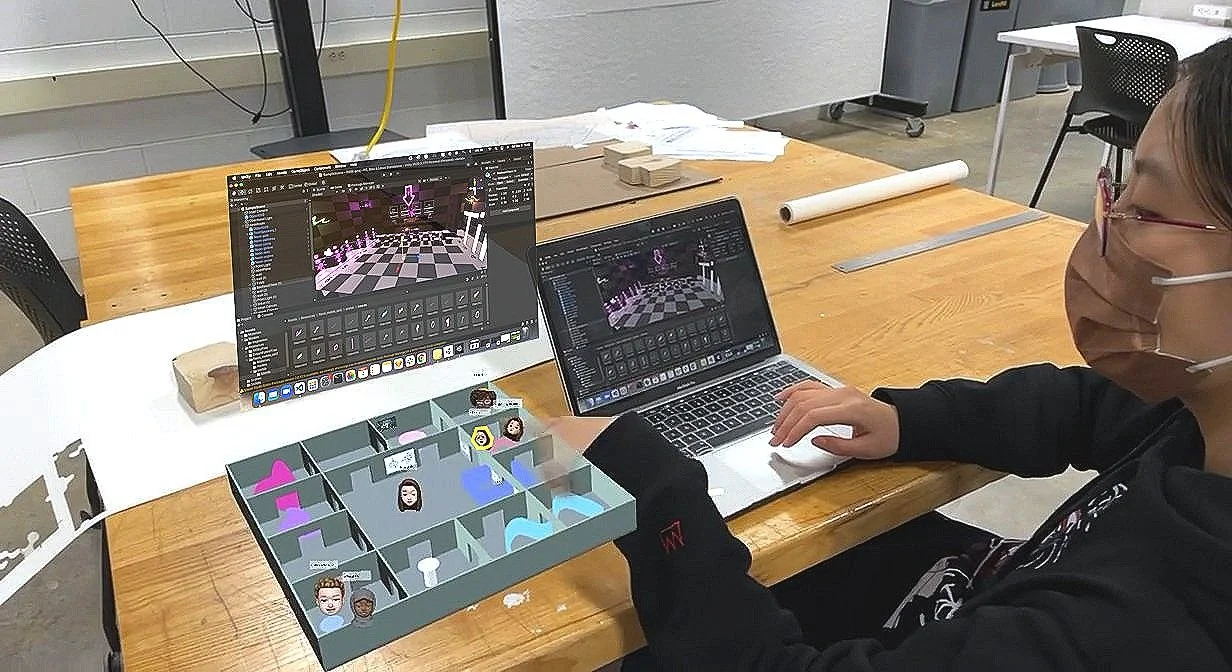Connected virtual learning in physical space
Duration
Nov 2021 - Dec 2021 (1 mo)
Team
Chung-Han(Joanne) Huang, Laura Li
Advisor
Dr. Michael Nebeling, Audrey Labrie
Implementation
Lens Studio, Rhinoceros, Tinkcad, iMessage, Photoshop, Illustrator, Figma, Premiere Pro, After Effect
Keywords / Domain
AR, Augmented Reality, Remote learning, Connection, Network, User experience, User interface, XR Prototype, Virtual and physical space
Problem statement
People need real interaction and connection in remote learning. Harvard Business Review shows that “the personal networks have shrunk by close to 16% during the pandemic,” A non-negligible demand of real connection is eager to find a solution.
How might we better connect students in an online learning environment but keep the flexibility of learning anywhere?
Persona
Digital prototype
Solution
Marker-based virtual classroom layout
-> see all your classmates and what they are doing at a time
Spatial audio for a sense of intimacy
->join and hear inspiring conversations anytime
Bridge to the physical environment and users’ familiar devices
-> import 2D and 3D contents seamlessly
Why AR
We are providing the possibility for users to work in public spaces, so the user could join the class anywhere.
In addition, users might want to use their devices that they are familiar with for note-taking and looking up documents.
We also want to provide the users the opportunity to engage with the real environment, and import content from the real world more easily.
Physical prototype & takeaway
Takeaway and improvement
Users might be overwhelmed when people keep approaching to talk
-> indicate user status in their profile tags
Users might want to talk privately or one-on-one meeting
-> create two kinds of rooms: lounge room and private room
Users might want to import content from their surroundings and devices
-> allow to import through photogrammetry, uploading files, and screen-sharing
Main interactions
Privacy
We found that capturing fingerprints and palm prints is possible in our project, raising a serious privacy issue.
->
We decided to add a post effect on hands to turn them low-resolution, blurring the biometric identities.
Implementation
3D modeling: Rhinoceros, Tinkercad
Avatar: iMessage, After Effects
Marker: Photoshop, Illustrator
Interface elements: Figma
Video editing: Premiere Pro, After Effect
AR filter: Lens Studio
Image tracking - project the virtual classroom layout
Hand-tracking - hand-menu
Behavior script - hand menus interaction
Tracking surface, Object Controller- manipulate the 3D content
Hand segmentation - add post effect on hands for privacy
Future work
Let users customize room layouts and size to provide flexibility
Let users turn into VR if they want to explore the room immersively
Seeing spaces in third-person perspective provides more possibilities to interact with people.




